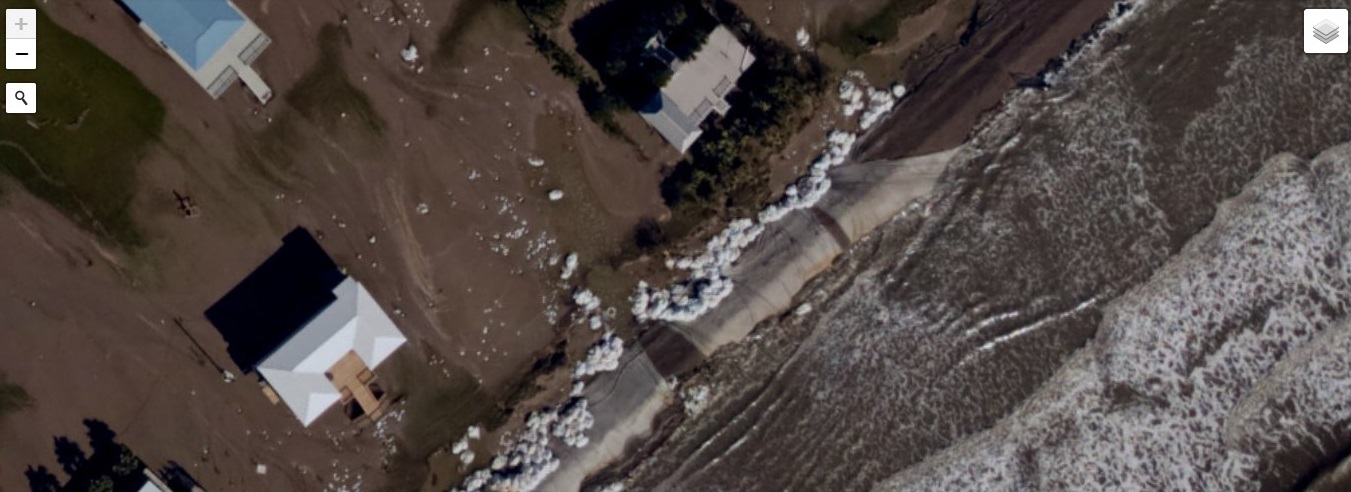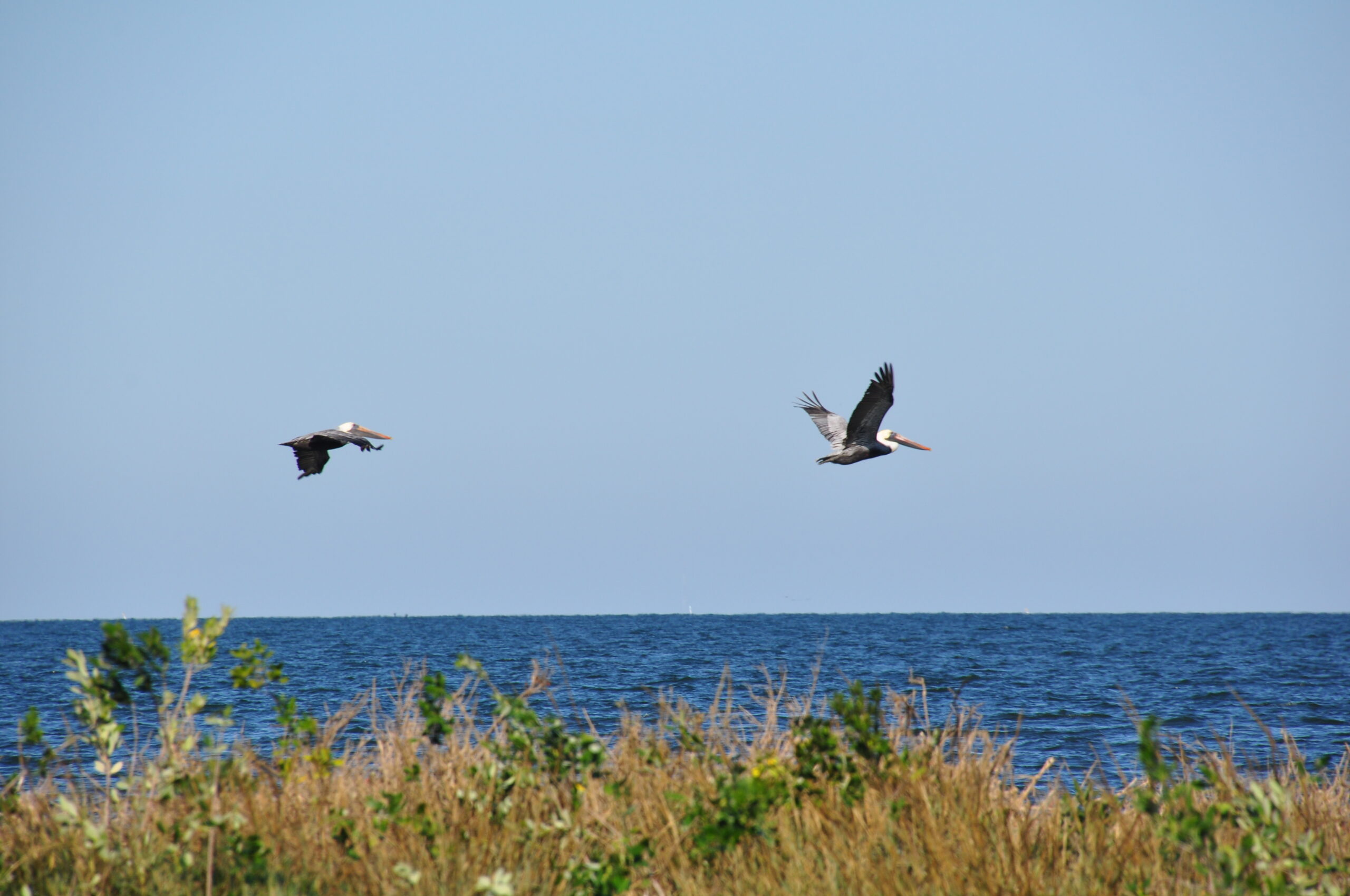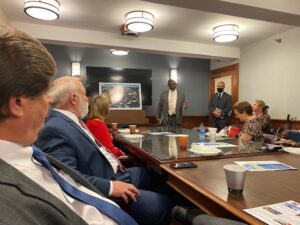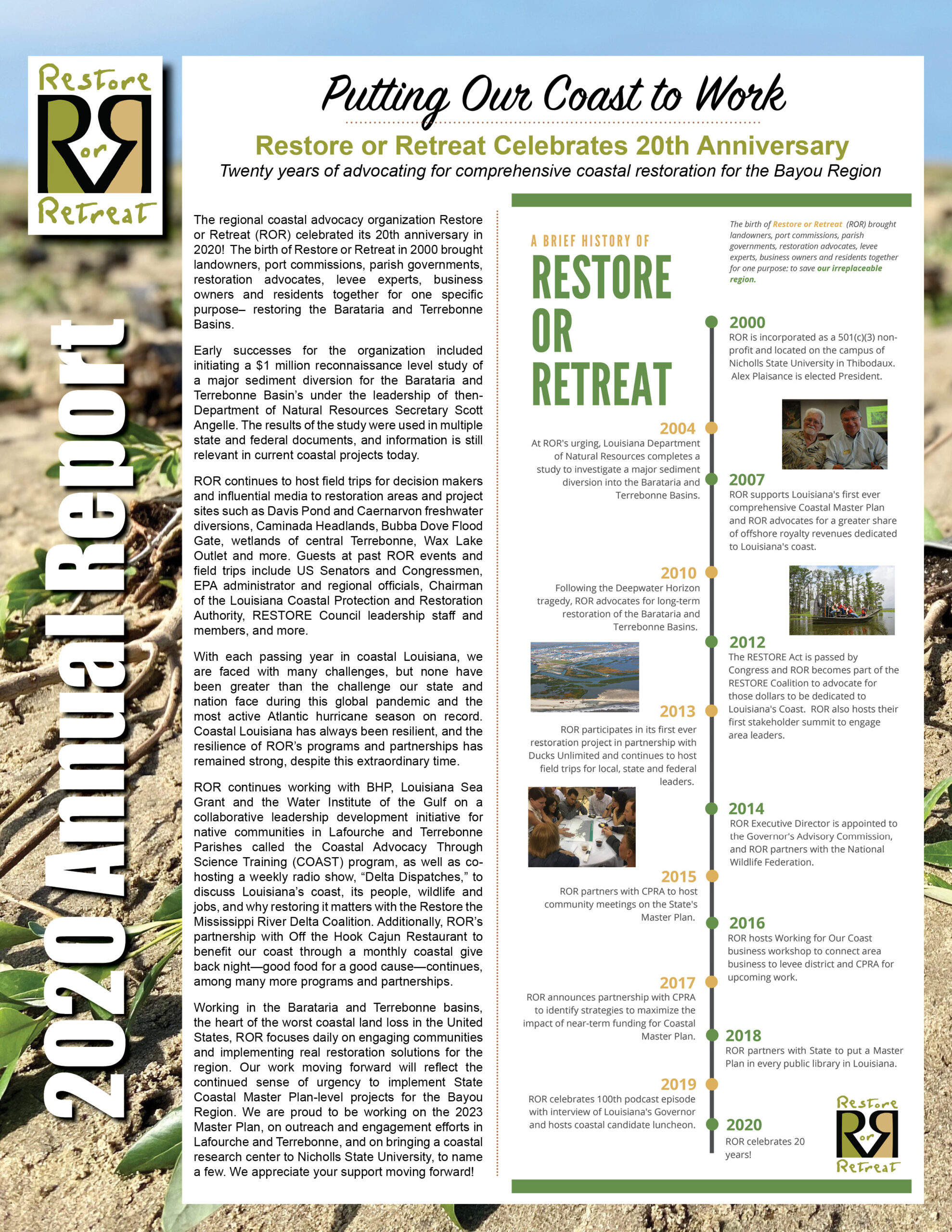How 2020 has impacted our coast
Unprecedented. Extraordinary. Exceptional. Challenging. There are so many words to describe 2020, and the year isn’t even over yet! Before we put this year to bed (finally), let’s reflect on how the events of 2020 have impacted our work to restore and protect our irreplaceable region.
Impacts from Cristobal, Hannah, Marco, Laura, Sally, Beta, Delta, Zeta…
Damage assessments are still ongoing, but it isn’t a surprise to hear our coast took a beating from the southwest to southeast border. Prior to any storm’s landfall, Louisiana’s Coastal Protection and Restoration Authority (CPRA) works year-round with local levee districts and the US Army Corps of Engineers to make sure each region is fully prepared prior to any storm. Protection systems in Terrebonne, North and South Lafourche, Plaquemines and Lafitte all held up well considering 2020’s trials. Marsh restoration projects also fared well, with no major damage upon initial review. Shorelines took the brunt of one of the most active hurricane seasons to date with major impacts to West Belle Pass, which was currently under construction using BP funds, and to Caminada Headland, which saw a $216 million restoration completed in 2017. Grand Isle also made national headlines with the impacts to its shoreline, and the island will see both near-term and long-term beach repairs by the US Army Corps of Engineers in partnership with CPRA and Jefferson Parish. Finally, we continue to keep our friends and family in Southwest Louisiana in our thoughts and prayers as they continue to recover from the Category 4 Hurricane Laura, which made landfall nearly 15 years to the date after Hurricane Rita devastated the area in 2005.

Funding
While usually not top of mind when it comes to coastal impacts, we must carefully consider the financial impact of a global pandemic and hard-struck global and local economy to our coast. If the state faces a dire budgetary outlook, surplus dollars usually allocated to our coast could dwindle, and state agencies could also see an impact despite usually having financial protections. Offshore royalty revenues, known as GOMESA, are also a major, recurring funding source for our coastal projects, and we are currently weighing the impacts of decreased activity in the Gulf due to COVID and an active hurricane season to the coastal program. Finally, local parishes could see lower than normal sales and ad valorem taxes; these critical local funds have helped to build our vital protection systems for our areas which have received little to no federal dollars, like Morganza to the Gulf and the Larose to Golden Meadow systems. With last year’s Annual Plan of coastal work topping $1 billion, all eyes will be on the coastal spending plan for next year, set to be released by CPRA by the end of the year. The good news is anything close to $1 billion in projects planned for our coast will bring steady, good paying jobs to our area for years to come.
Volunteer activities
One of the ways citizens can get involved in supporting our coast is volunteering for plantings, bayou and beach clean ups, oyster shell recycling and more, but there has been nearly a full stop to all of these activities due to the coronavirus. With care and caution, this month, ROR will help resume these volunteer activities by joining forces with LDWF, CPRA, the Barataria-Terrebonne National Estuary Program, Nicholls, and Fletcher to host a fall planting on Queen Bess Island. Our bird friends returned to their island in full force this spring, and we have been asked to plant additional nesting materials like black mangroves and matrimony vine to make their home great again for spring. We are still limited to participation due to COVID restrictions, but initial response was tremendous. We are looking forward to getting out soon to Queen Bess, and we hope to have even more activities in the upcoming months where volunteers are needed.

In short, this year was a roller-coastal for Louisiana’s coast, but we can all look forward to 2021, which will bring major critical and restoration projects to our area, as well as an economic shot in the arm.



